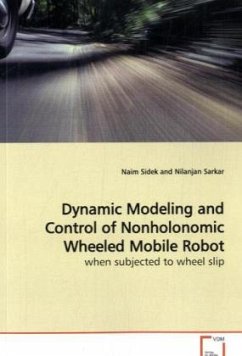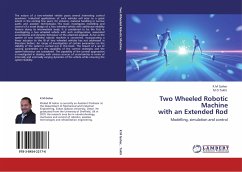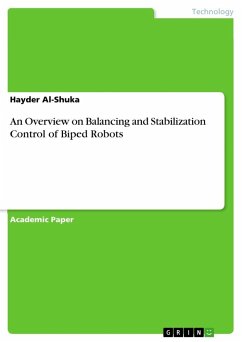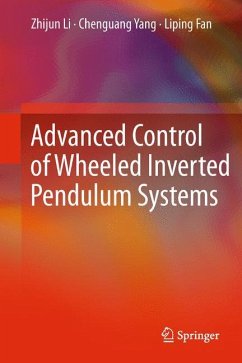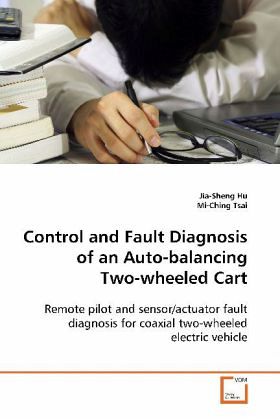
Control and Fault Diagnosis of an Auto-balancing Two-wheeled Cart
Remote pilot and sensor/actuator fault diagnosis for coaxial two-wheeled electric vehicle
Versandkostenfrei!
Versandfertig in 6-10 Tagen
39,99 €
inkl. MwSt.

PAYBACK Punkte
20 °P sammeln!
In this book, we present a pilot control algorithm, which converts two joysticks commands into two torque directives for movement. This technique allows the user to operate the ABTWC linearly for both motion and orientation control via a joystick. Since a human being is involved in the operation of an ABTWC, the rider faces the danger of being injured in a fall if any system failure occurs. Therefore, the rider should be warned immediately when any system failure develops, ensuring that proper action can be taken to avoid a dangerous accident. A model-based fault-detection filter is designed t...
In this book, we present a pilot control algorithm,
which converts two joysticks commands into two
torque directives for movement. This technique
allows the user to operate the ABTWC linearly for
both motion and orientation control via a joystick.
Since a human being is involved in the operation of
an ABTWC, the rider faces the danger of being
injured in a fall if any system failure occurs.
Therefore, the rider should be warned immediately
when any system failure develops, ensuring that
proper action can be taken to avoid a dangerous
accident. A model-based fault-detection filter is
designed to detect sensor faults. This book employs
a PI observer to detect abnormal information in an
ABTWC caused by actuator faults and steering load-
torques. In order to promptly alert the rider for
safety purposes in the event of a malfunction, the
decision-making process to identify a critical
failure is investigated. A statistical threshold
that has the benefits of improving decision-making
reliability is investigated for diagnosing a
possible abnormal operation and/or a serious system
malfunction.
which converts two joysticks commands into two
torque directives for movement. This technique
allows the user to operate the ABTWC linearly for
both motion and orientation control via a joystick.
Since a human being is involved in the operation of
an ABTWC, the rider faces the danger of being
injured in a fall if any system failure occurs.
Therefore, the rider should be warned immediately
when any system failure develops, ensuring that
proper action can be taken to avoid a dangerous
accident. A model-based fault-detection filter is
designed to detect sensor faults. This book employs
a PI observer to detect abnormal information in an
ABTWC caused by actuator faults and steering load-
torques. In order to promptly alert the rider for
safety purposes in the event of a malfunction, the
decision-making process to identify a critical
failure is investigated. A statistical threshold
that has the benefits of improving decision-making
reliability is investigated for diagnosing a
possible abnormal operation and/or a serious system
malfunction.



